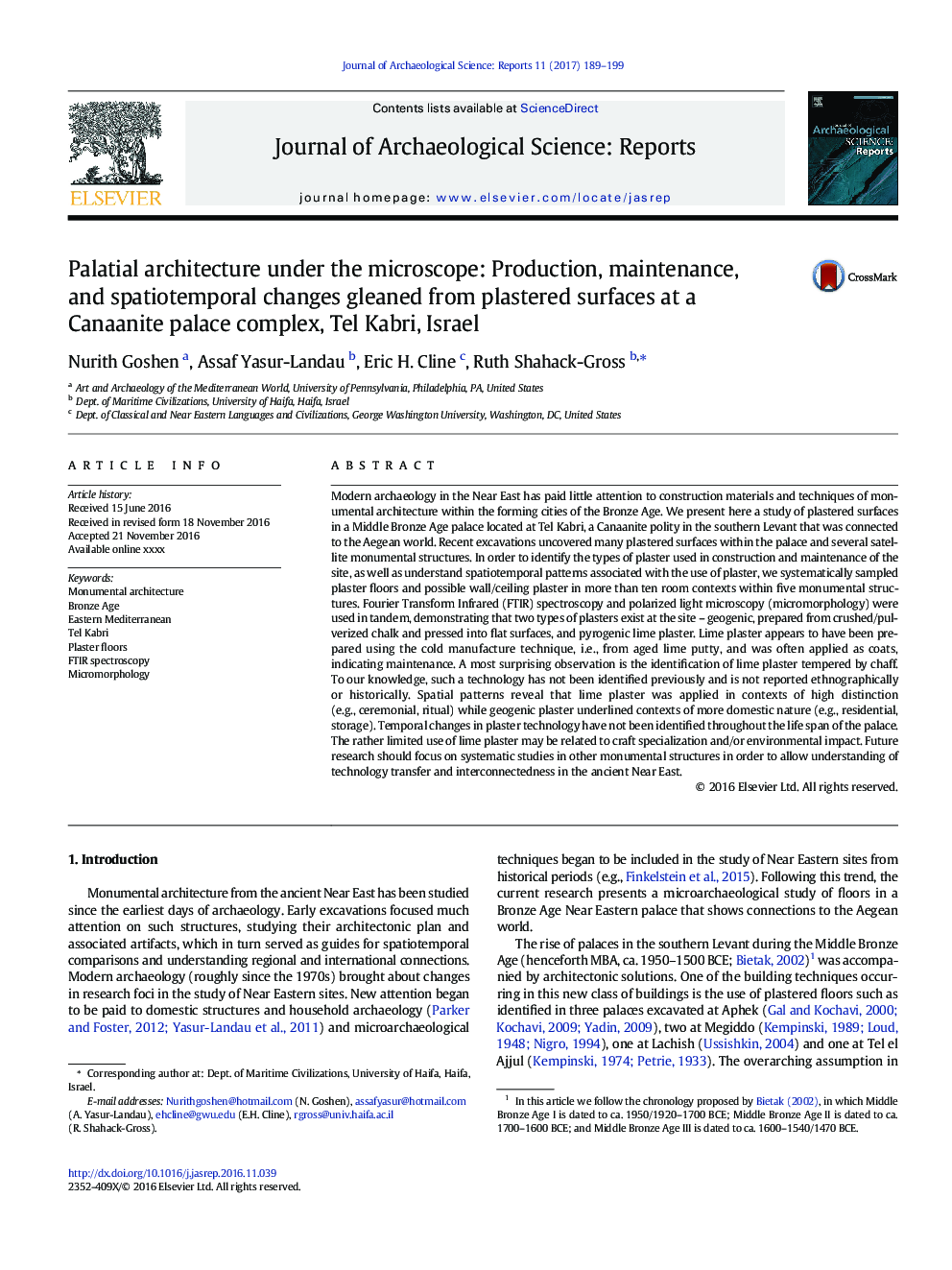| کد مقاله | کد نشریه | سال انتشار | مقاله انگلیسی | نسخه تمام متن |
|---|---|---|---|---|
| 5112558 | 1483932 | 2017 | 11 صفحه PDF | دانلود رایگان |
عنوان انگلیسی مقاله ISI
Palatial architecture under the microscope: Production, maintenance, and spatiotemporal changes gleaned from plastered surfaces at a Canaanite palace complex, Tel Kabri, Israel
ترجمه فارسی عنوان
معماری حومه زیر میکروسکوپ: تغییرات تولید، نگهداری و فضایی موقت از سطوح گچ شده در یک مجتمع کاخ کنایان، تل کبری، اسرائیل
دانلود مقاله + سفارش ترجمه
دانلود مقاله ISI انگلیسی
رایگان برای ایرانیان
کلمات کلیدی
موضوعات مرتبط
علوم انسانی و اجتماعی
علوم انسانی و هنر
تاریخ
چکیده انگلیسی
Modern archaeology in the Near East has paid little attention to construction materials and techniques of monumental architecture within the forming cities of the Bronze Age. We present here a study of plastered surfaces in a Middle Bronze Age palace located at Tel Kabri, a Canaanite polity in the southern Levant that was connected to the Aegean world. Recent excavations uncovered many plastered surfaces within the palace and several satellite monumental structures. In order to identify the types of plaster used in construction and maintenance of the site, as well as understand spatiotemporal patterns associated with the use of plaster, we systematically sampled plaster floors and possible wall/ceiling plaster in more than ten room contexts within five monumental structures. Fourier Transform Infrared (FTIR) spectroscopy and polarized light microscopy (micromorphology) were used in tandem, demonstrating that two types of plasters exist at the site - geogenic, prepared from crushed/pulverized chalk and pressed into flat surfaces, and pyrogenic lime plaster. Lime plaster appears to have been prepared using the cold manufacture technique, i.e., from aged lime putty, and was often applied as coats, indicating maintenance. A most surprising observation is the identification of lime plaster tempered by chaff. To our knowledge, such a technology has not been identified previously and is not reported ethnographically or historically. Spatial patterns reveal that lime plaster was applied in contexts of high distinction (e.g., ceremonial, ritual) while geogenic plaster underlined contexts of more domestic nature (e.g., residential, storage). Temporal changes in plaster technology have not been identified throughout the life span of the palace. The rather limited use of lime plaster may be related to craft specialization and/or environmental impact. Future research should focus on systematic studies in other monumental structures in order to allow understanding of technology transfer and interconnectedness in the ancient Near East.
ناشر
Database: Elsevier - ScienceDirect (ساینس دایرکت)
Journal: Journal of Archaeological Science: Reports - Volume 11, February 2017, Pages 189-199
Journal: Journal of Archaeological Science: Reports - Volume 11, February 2017, Pages 189-199
نویسندگان
Nurith Goshen, Assaf Yasur-Landau, Eric H. Cline, Ruth Shahack-Gross,
